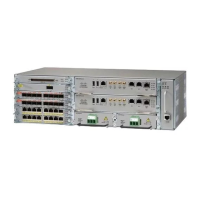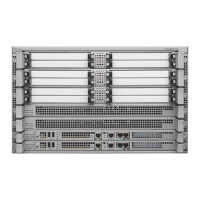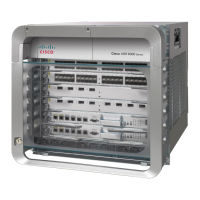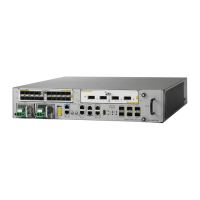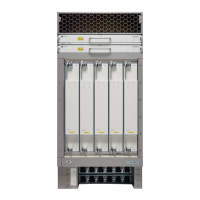PurposeCommand or Action
Example:
RP/0/RSP0/CPU0:router(config-ospfv3)# area 0
Replace area-id with the OSPFv3 area identifier.
Enters interface configuration mode and specifies the
interface name and notation rack/slot/module/port.
interface type interface-path-id
Example:
RP/0/RSP0/CPU0:router(config-ospfv3-ar)#
interface gigabitEthernet 0/1/5/0
Step 6
•
The example indicates a Gigabit Ethernet interface in
modular services card slot 1.
Enables BFD to detect failures in the path between adjacent
forwarding engines.
bfd fast-detect
Example:
RP/0/RSP0/CPU0:router(config-ospfv3-ar-if)# bfd
fast-detect
Step 7
commit
Step 8
Verifies that BFD is enabled on the appropriate interface.show run router ospfv3
Example:
RP/0/RSP0/CPU0:router(config-ospfv3-ar-if)#show
run router ospfv3
Step 9
Enabling BFD on a Static Route
The following procedure describes how to enable BFD on a static route.
Bundle VLAN sessions are restricted to an interval of 250 milliseconds and a multiplier of 3. More
aggressive parameters are not allowed.
Note
SUMMARY STEPS
1.
configure
2.
router static
3.
address-family ipv4 unicast address nexthop bfd fast-detect [minimum-interval interval] [multiplier
multiplier]
4.
vrf vrf-name
5.
address-family ipv4 unicast address nexthop bfd fast-detect
6.
commit
Cisco ASR 9000 Series Aggregation Services Router Routing Configuration Guide, Release 5.1.x
202 OL-30423-03
Implementing BFD
Configuring BFD Under a Dynamic Routing Protocol or Using a Static Route


















